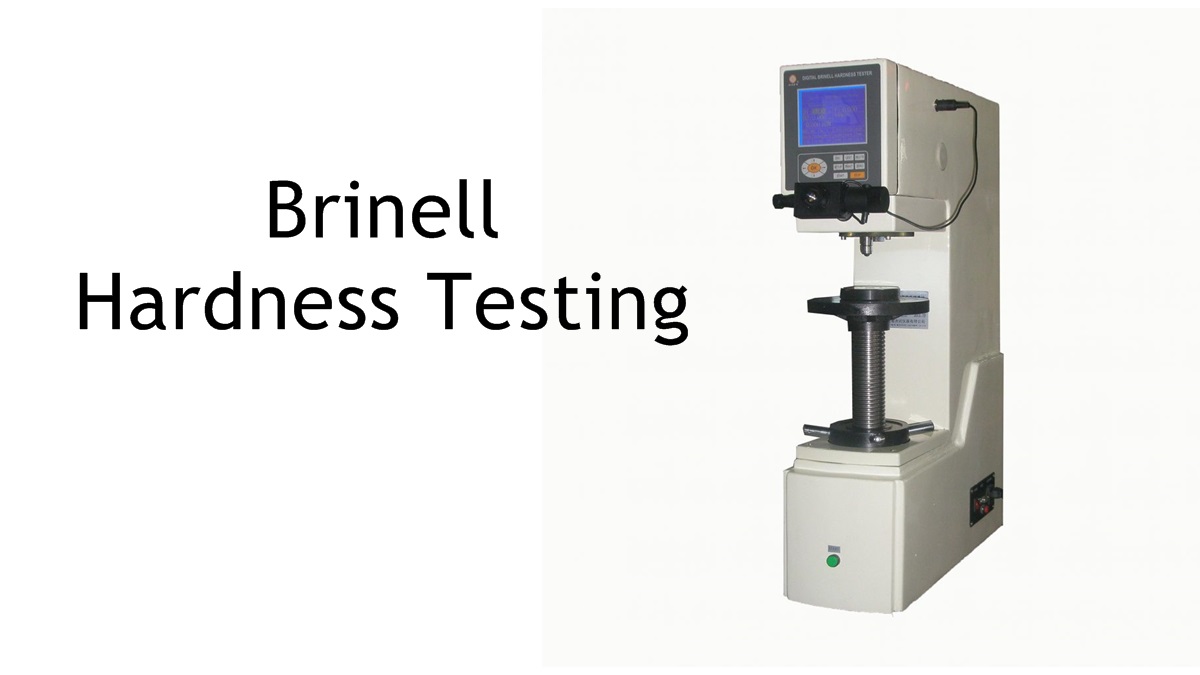
Table of Contents
1. What is Brinell Hardness Testing?
The hardness testing of a material is that mechanical property shows its ability to withstand force or load when applied to it.
There are as many as 12 methods of checking the hardness of a material. One of these methods is the use of material indentation with another harder object to measure hardness.
The depth of indentation experienced by these materials shows their level of hardness. The lesser the depth of the indentation, the harder the material.
Brinell Hardness testing is one of the indentation methods used for testing material hardness and is mostly suited for hard-grained materials.
The hard material used as an indenter in Brinell testing is usually a 10mm diameter steel ball. This ball impacts the material with a force of 30kN to cause the indentation on the material.
The depth caused by this force gives an indentation hardness number, that is then compared to an indexed Brinell hardness chart to arrive at the hardness of the material.
The Brinell scale of hardness exists for soft and hard materials.
Other scales, including the Rockwell B scale, Rockwell C scale, and Vickers scales, have corresponding hardness values and can be converted to the Brinell scale.
2. What are the Applications of Brinell Hardness Testing?
Of the indenter type hardness tester, the Brinell hardness tester tops the most used testing methods. This factor can be attributed to its accuracy and consistency in measuring metal and non-metal hardness, especially for materials with rough surfaces.
Some materials that are suitable for Brinell hardness testing includes casting materials like cast iron and forgings like tempered and annealed steel.
The use of a great pressure head, big diameter, and big pressure makes it possible for the Brinell hardness tester to test rough-surfaced materials’ hardness.
Other suitable materials include alloys of non-ferrous metals. Softer metals like Zinc, aluminum, tin, lead, and copper can also be precisely tested and measured for hardness.
Brinell hardness testing has good repeatability, accuracy, and representation. The portability of the Brinell hardness tester makes testing within a workshop easy.
On-site hardness testing is also possible, especially for large materials with no samples.
3. What is the Method of Brinell Hardness Testing?
The method for carrying out the Brinell hardness test involves one standard method and a non-standard method, which is often used commercially.
The standard method uses a 10mm diameter ball indenter with a 250kg to 500kg for soft materials and a 500kg to 3000kg for harder materials.
The derived formula for the Brinell Hardness Number (BHN) used in this standard method is given as 2P/πD x (D – √D² – d²)
P = Load, D = Diameter of the indenter, and d = diameter of indent made on the indenter’s object.
However, the non-standard method, which is also widely used commercially, uses light load and lower ball diameter. The load used here varies between 100kg and 250kg, and the ball indenter used are 1mm, 2.5mm, and 5mm diameter balls.
The Brinell hardness tester uses a load selector to choose the required ball diameter and load based on the material to be tested.
There is also a platform and a lever for moving the tested material vertically to move it closer or farther from the impacting ball indenter.
There is a lamp on the tester column for a proper view of the material and visual inspection of the material’s indent after impact.
The process involves the ball indenter, which contacts the load, which then impacts the material’s surface, which then makes an indent on the tested material.
If the indenter is released and contacts a smaller load, a small indent is observed on the tested material, which signifies a lower hardness number.
However, when the indenter released contacts a bigger load, a deeper indent is observed on the tested material, which signifies a higher hardness number.
The Brinell hardness test shows that the applied load determines the indent observe and hence the hardness number.
The formula for the non-standard Brinell hardness number is given as 2P/(π) D² (1 – cosθ)
Where P = Load, D = Diameter of the indenter, and θ = angle of contact made by the indenter